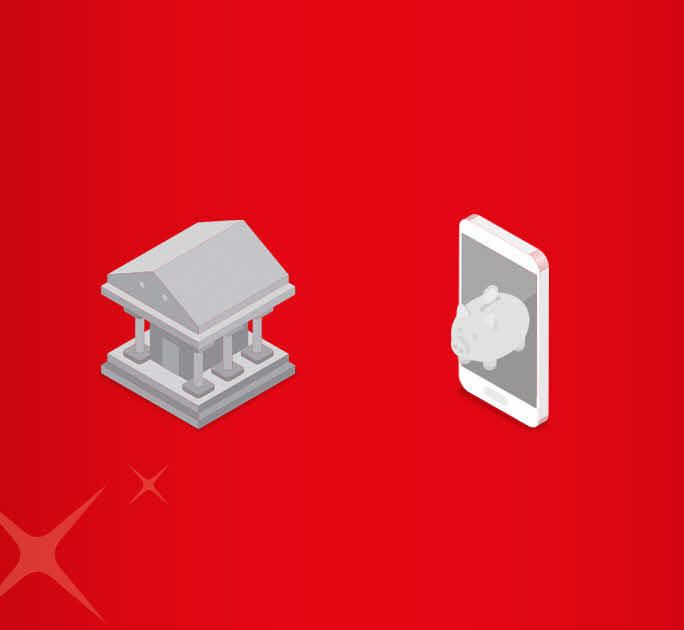- Save
- Invest
- Borrow
- Pay
- More
- Customer Services

NEFT and RTGS: Which Payment Method Is Right for You?
Key Takeaways
- All customers with savings or current accounts can use NEFT and RTGS services.
- NEFT (National Electronic Funds Transfer): Settles funds in half-hourly batches throughout the day. Preferred for transfers that are not time-sensitive.
- RTGS (Real-Time Gross Settlement): Provides continuous and real-time settlement of transactions. Preferred for urgent transfer of large amounts.
Introduction
Mrs. Lohia runs a home-based bakery and believes that inter-bank transfer can be an extremely useful and convenient service. It would enable her to pay for her supplies as well as receive payments from her clients. However, she feels confused by acronyms like NEFT, RTGS, and IMPS, making it difficult for her to take full advantage of these services. While she has a general idea about these banking services, she is unaware of the difference between NEFT, RTGS, and IMPS. This article is for Mrs. Lohia and others like her. This article is designed to help everyone become well-informed bank customers and take optimum advantage of the available banking services.
Different ways of transferring money
In India, there are three different ways that you can use to transfer money online. These include the National Electronic Fund Transfer (NEFT), Real Time Gross Settlement (RTGS), and Immediate Payment Services (IMPS). All of these are electronic payment systems that allow you to transfer funds from one bank to another within the country. NEFT and RTGS are extremely popular, especially among business owners who need to make large transactions frequently. It is therefore essential to understand the difference between NEFT and RTGS.
What is NEFT?
The acronym 'NEFT' stands for National Electronic Funds Transfer. It is a 24/7 service that processes transactions in half-hourly batches. The RBI has not specified any minimum or maximum limit on the transfer amount. All you need to provide is a few details of the beneficiary to initiate an NEFT transfer. The details required for a typical NEFT transfer are the name of the beneficiary, account number, account type, name of the bank, and the Indian Financial System Code (IFSC) of the bank.
What is RTGS?
The acronym 'RTGS' stands for Real-Time Gross Settlement. RTGS is a funds transfer system based on a gross settlement concept where money is moved from one bank to another in real-time. RTGS is primarily designed for transferring large amounts of money. It is important to note that while there is no maximum limit on the transfer amount, you are required to transfer a minimum of INR 2 lakhs at a time. RTGS is especially useful when the transaction amount is high and payment needs to be processed immediately. Like with NEFT, the details required for a typical RTGS transfer are the name of the beneficiary, account number, account type, name of the bank, and Indian Financial System Code (IFSC) of the bank.
Key differences between NEFT and RTGS
Both the methods are safe and secure systems of fund transfers and are also monitored by the RBI. The services are easily accessible and available 24×7×365 via bank websites, internet banking portals, and mobile applications that are available for download from the Google Play Store and iOS App Store on your internet-enabled devices. While there are similarities, understanding the differences between NEFT and RTGS is crucial in choosing which method of transaction suits you best.
|
Criteria |
NEFT (National Electronic Funds Transfer) |
RTGS (Real-Time Gross Settlement) |
|
Processing Method |
Transactions are processed in half-hourly batches |
Transactions are processed in real-time, on a transaction-by-transaction basis |
|
Settlement Type |
Based on net settlement |
Based on gross settlement |
|
Transaction Charges |
No NEFT charges at DBS Bank (charges may apply with other banks) |
No RTGS charges at DBS Bank (charges may apply with other banks) |
|
Transaction Timings |
Available 24×7, 365 days a year for online transfers; offline NEFT timings depend on bank branch hours |
Available 24×7, 365 days a year |
|
Transaction Limit |
No minimum or maximum limit; transfer amounts range from INR 10 to INR 1,000,000 per transaction |
Minimum transfer amount is INR 2 lakhs; no maximum limit (subject to bank-specific limits) |
Is a Bank Account Necessary for RTGS and NEFT?
To perform online transactions via RTGS or NEFT, a savings or current account is required. However, a person having no bank account can also send funds through NEFT, and will have to deposit cash at the nearest NEFT-enabled branch of any bank. The transfer can be done to a beneficiary having a bank account with another NEFT-enabled bank. For such cash transactions, the maximum transfer limit is INR 50,000.
Online transfer of funds is a vital and essential service in the global banking industry. For India, these payment systems have revolutionised the banking sector and given momentum to the growth of a digital and cashless economy. After exploring different methods of transferring funds online and understanding the key differences between NEFT and RTGS, Mrs. Lohia has also started sending and receiving payments online. In fact, she believes that this push for digitalisation has improved the transparency and security of her finances.
With the digibank by DBS app, you can easily and conveniently initiate RTGS and NEFT transactions. All transactions done via the digibank by DBS mobile app are safe and secure.
Open Savings Account
in 3 easy steps
Aadhar Card + PAN Card + Video KYC
= Account opened!














